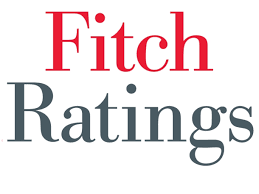
India's new budget outlined some economic reforms that could support the economy, but its fiscal stance was left broadly unchanged, with no plans for meaningful consolidation, says Fitch Ratings. Overall, the budget points to policy continuity on the part of the governing Bharatiya Janata Party (BJP) following May's general election.
The newly appointed finance minister presented India's final budget for the fiscal year ending March 2020 (FY20) on 12 July 2019. It is the government's first major economic policy announcement since the BJP strengthened its political position by winning an outright majority in the lower house. The main thrust of policy measures and fiscal targets is broadly consistent with the interim budget announced prior to the election.
The budget indicates that the BJP will continue its economic reform efforts in its second term and avoid the fiscal loosening that might have been expected given the country's sluggish growth, lower lending by non-bank financial institutions and election promises to support rural voters. However, it falls short of signalling prospects for significant fiscal consolidation in the next few years. The medium-term fiscal deficit targets of 3.0% deficits in FY21 and FY22 make it highly unlikely, in our view, that the debt ceiling of 60% for general government debt will be met by FY25, as stipulated in the Fiscal Responsibility and Budget Management (FRBM) Act.
Plans to support growth include INR100 trillion (USD1.4 trillion) of infrastructure spending in the next five years and efforts to encourage foreign-direct investment in certain sectors, including electronics. The government also intends to reduce its ownership in some non-financial public-sector entities and modify its policy of retaining at least a 51% direct holding. It will also inject a further INR700 billion into public-sector banks.
However, the extent and timing of any benefits from the budget measures to GDP growth will depend on policy details that are yet to be announced and on effective implementation. Moreover, some measures could weigh on growth over time, such as higher import duties on many products to provide a level playing field to domestic industry.
In our most recent Global Economic Outlook - June 2019 we reduced our FY20 Indian GDP growth forecast slightly to 6.6%. We still see growth rising back above 7.0% in FY21 and FY22, partly because we anticipate monetary and regulatory easing from the central bank to support some recovery in credit to the private sector. Fitch believes the proposed capital injection will allow public-sector banks to meet minimum regulatory capitalisation requirements, but may not leave much space for the banks to accelerate credit growth in FY20, considering slow non-performing loan recoveries and ongoing provisioning.
The budget targets a slight narrowing in the fiscal deficit target, to 3.3% of GDP, from an estimated 3.4% in FY19 and in the FY20 interim budget. We think the fiscal targets are broadly credible, although projected revenue growth, at 13.5%, may prove optimistic as it is based on the government's higher 7.0% real GDP growth forecast and disinvestment targets might not be met. There is also a recent history of modest slippage relative to targets, but the government plans to continue increasing the number of registered tax payers and could reduce or postpone spending if revenue underperforms.
We believe off-budget spending is likely to increase due to, for instance, the additional banking-sector recapitalisation, which is equivalent to 0.3% of GDP. This should not affect the deficit, but it will raise the debt level. Weak public finances are a key constraint on India's 'BBB-'/Stable sovereign rating, which we affirmed on 4 April 2019.
0 thoughts on “India Budget Advances Economic Reform but Fiscal Settings Unchanged Fitch Ratings”